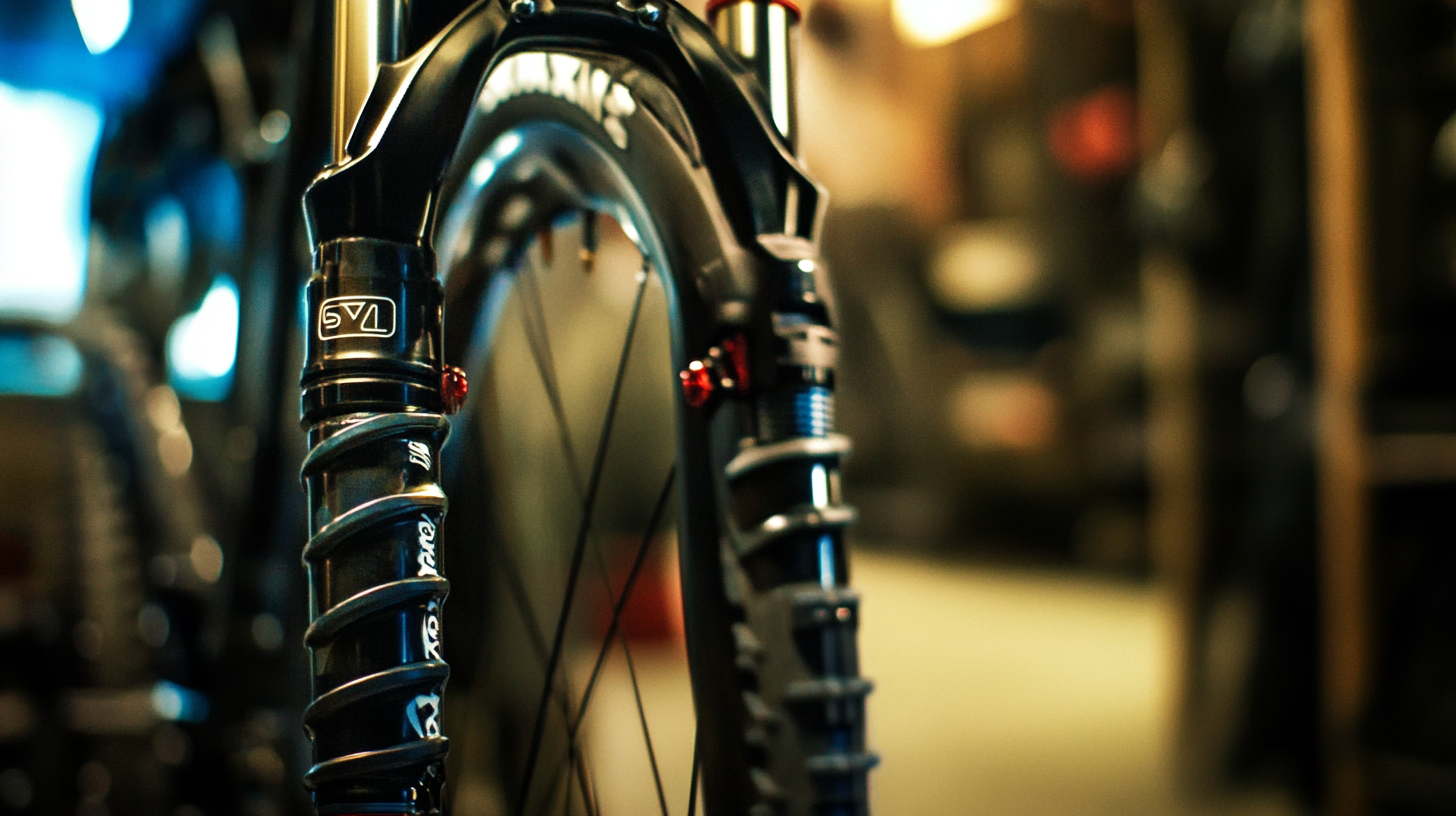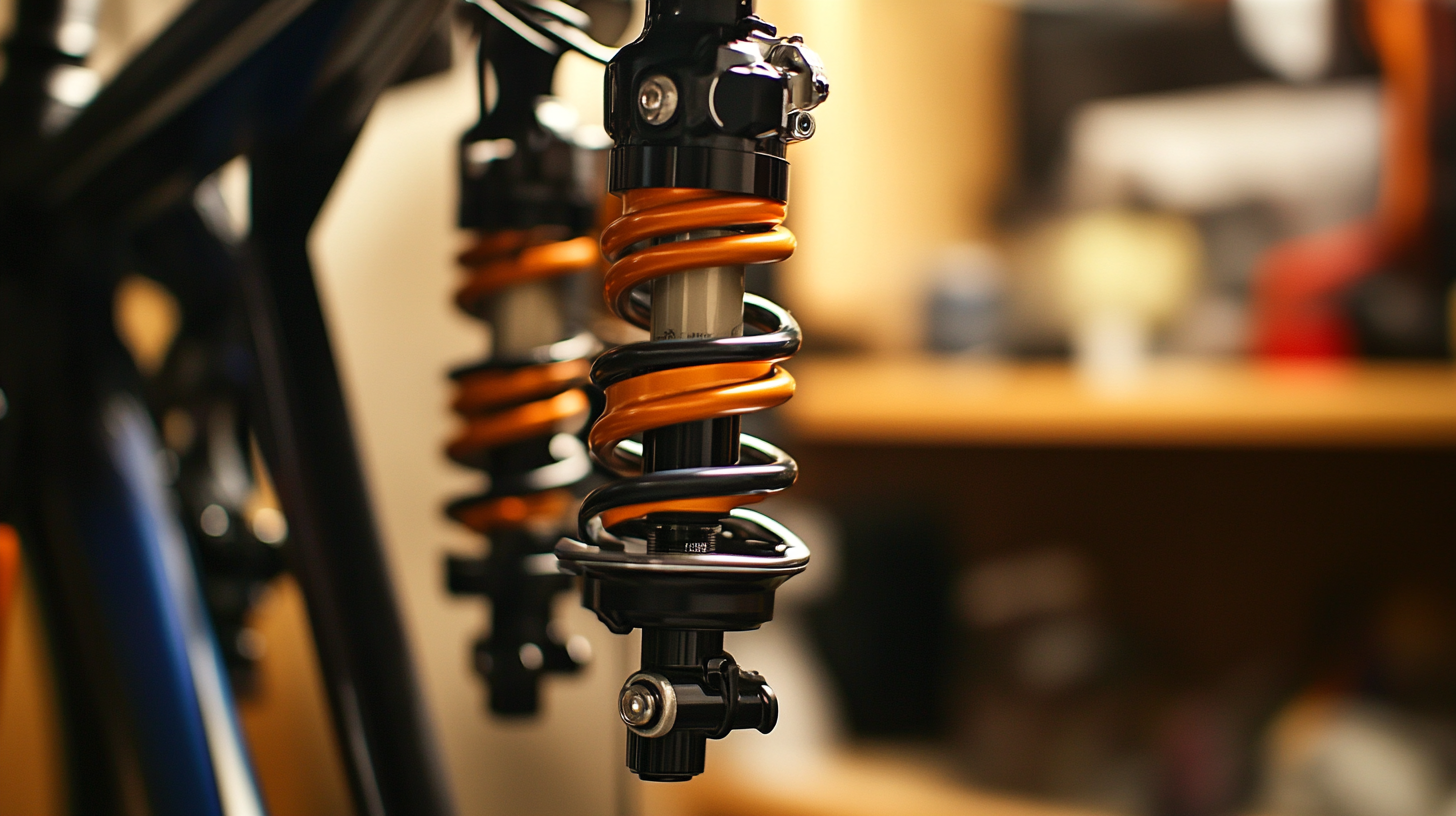Choosing the right Bike Suspension Front is crucial for enhancing your cycling experience, whether you’re a casual rider or a competitive athlete. According to a survey by the Bicycle Product Suppliers Association, about 70% of cyclists believe that proper suspension can significantly improve comfort and control while riding on varied terrains. Additionally, industry reports indicate that well-optimized front suspension systems can reduce fatigue and increase overall performance, making it imperative for riders to understand the key factors in selecting the ideal model for their specific needs. In this blog, we will delve into seven ultimate secrets that will empower you to make an informed decision, ensuring that your investment enhances both performance and enjoyment on the trails.

Choosing the right front bike suspension can greatly enhance your cycling experience, especially when tackling different terrains. There are primarily two types of front suspensions: hardtail and full-suspension. Hardtail bikes offer a simpler design with suspension on the front only, making them light and efficient for climbing. They are ideal for cross-country racing or smooth trails. In contrast, full-suspension bikes come with both front and rear suspension, providing a more comfortable ride on rugged trails and downhill sections.
Tip: When selecting a suspension type, consider the terrain you'll be biking on and your riding style. If you prefer speed on smoother paths, a hardtail might be the best choice. However, if you enjoy tackling rougher trails, investing in a full-suspension bike will significantly improve your comfort and control.
Another important factor to consider is suspension travel. This measurement indicates how much the suspension can compress under pressure. Longer travel suspensions are typically better for downhill riding, while shorter travel is suited for cross-country or road biking.
Tip: Test ride bikes with varying suspension travel to find the right balance that fits your riding habits and the challenges of the terrains you frequent.
When selecting front suspension for your riding style, there are several key factors to consider that can significantly enhance your riding experience. One of the first aspects to evaluate is the type of terrain you frequent. For rough trails filled with rocks and roots, a suspension with more travel will absorb bigger bumps, providing a smoother ride and better control. On the other hand, if you're primarily riding on smoother paths, a lighter suspension with less travel may offer sufficient support while improving efficiency.
Another essential factor is the suspension design. There are two main types: coil and air. Coil suspensions are known for their durability and consistent performance, making them ideal for riders who tackle aggressive terrains. Conversely, air suspensions are adjustable, allowing riders to fine-tune their setup based on their weight and riding preferences. This flexibility can be a game-changer for those who ride in varying conditions.
When choosing a bike suspension, don’t forget to consider your personal riding style. If you prefer aggressive downhill riding, opt for a suspension that emphasizes performance over weight. For cross-country and long-distance rides, prioritize lightweight options to enhance your efficiency. Always test ride different setups when possible; this real-world experience can provide invaluable insights that specifications alone cannot convey.
When it comes to bike performance and comfort, suspension travel plays a crucial role in determining how well your bike handles various terrains. Suspension travel refers to the vertical distance that the suspension can compress under load, absorbing shocks and impacts from the ground. A bike with appropriate suspension travel can significantly enhance your riding experience, making rides smoother and more controlled, especially on rough trails or bumpy roads.
Choosing the right amount of suspension travel is essential depending on your riding style and the type of terrain you tackle. For aggressive downhill riding or tackling rugged trails, more travel (typically 140mm and above) can provide the extra cushioning needed to handle big drops and technical sections. Conversely, if you're focusing on cross-country cycling or smooth paths, a bike with less travel (around 100mm) may offer a more efficient pedal stroke and better climbing capability without compromising comfort. Ultimately, understanding how suspension travel affects your bike's performance can help you make informed decisions that cater to your specific riding needs and enhance your overall experience.

When it comes to selecting the ideal front suspension for your bike, thorough testing and evaluation are crucial. According to a 2021 report from the Bicycle Suspension Institute, front suspension quality can significantly affect riding performance, providing up to 30% better shock absorption in rugged terrains. This means that choosing the right suspension not only enhances comfort but also improves control and stability, especially when navigating challenging trails.

When it comes to selecting the best bike suspension front, understanding the top manufacturers is crucial. Brands like RockShox, Fox Racing Shox, and Manitou have built their reputations on quality and innovation, ensuring riders get the best performance from their bikes. RockShox, for instance, is renowned for their meticulous engineering and cutting-edge designs, providing a smooth ride across a variety of terrains. Their products cater to both casual cyclists and professional riders, making them a versatile choice for anyone looking to enhance their biking experience.
Fox Racing Shox is another standout brand that consistently pushes the envelope in suspension technology. Their commitment to research and development has led to groundbreaking advancements in shock absorbers and fork designs that improve durability and responsiveness. Cyclists who seek precision and control often gravitate towards Fox products, which are engineered to handle everything from rugged mountain trails to competitive racing. With these trusted manufacturers, cyclists can feel confident in their choice of suspension systems, knowing they are backed by years of innovation and expertise in the biking industry.
